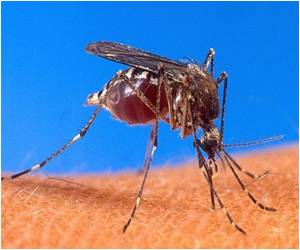
Malaria causes as many as 907,000 deaths each year, mostly among children in sub-Saharan Africa. Anopheles mosquitoes, which bite mainly between dusk and dawn, transmit human malaria by spreading Plasmodium parasites that multiply in the human liver and infect red blood cells. But of the more than 400 species of mosquito belonging to the Anopheles genus, only about 20 are effective vectors of human malaria, according to the World Health Organization.
The most dangerous of these is the Anopheles gambiae mosquito species, one of seven in the Anopheles gambiae complex, which was thought to have recently evolved the ability to transmit malaria. However, Virginia Tech scientists' discoveries suggest that this species is actually genetically linked to an older, ancestral lineage.
Scientists used chromosomal analysis to compare gene arrangements for mosquitoes both inside and outside the Anopheles gambiae family to trace the evolutionary connections.
"The outside species served as a reference group for understanding the evolutionary relationship among Anopheles gambiae mosquitoes," Kamali said. "Our goal was to determine how different species arose in the Anopheles gambiae complex, as they all look identical, but have different behaviors and capacities to transmit human malaria."
When resolving the Anopheles gambiae evolutionary history, the scientists identified breaks in DNA that lead to new chromosomal arrangements, and used these rearrangements to demonstrate the repeated evolution of the ability to transmit a parasite, in a back-and-forth fashion.
Advertisement
The discovery is innovative in the field of genetics research.
Advertisement
Source-Eurekalert














